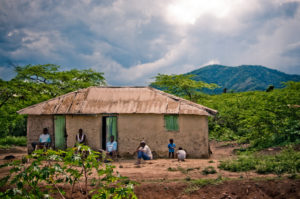
India’s rural demographic has largely been employed in agriculture, with the only changes over the decades being in the efficiency, production, and development of the sector. Gradually, post-independence, two major issues were realized, that
- Despite a majority of India’s population being engaged in the agriculture sector, there was the low inefficient production of crops, low quantity and quality food production, and stagnancy in the way resources and inputs were used in the sector.
- For India’s overall development, in terms of GDP, a competitive national economy, and a stable, safe growth rate that provided jobs, income, health, and education to all – it was necessary to create an industry and service sector that could somehow effectively absorb excess human capital and labour from the agriculture sector, where disguised employment was rampant, and raise its production, investment and income rates to boost India’s economy.
This gap that is displayed between the three sectors of the Indian economy and its evolution through the past few decades is depicted in the impact that science and technology has had in rural areas –
- With new inputs of production and resources like hybrid variety seeds, new cropping techniques and technology, irrigation and fertilizer facilities, and much more – we have boosted agricultural outputs, that too at a comparatively highly efficient rate that does not require as much human labor as before.
- Such new science and technology in rural areas have allowed for the absorption of industrial and service sector jobs even in rural regions, as well as methods of educating and training labor from such areas to help them meet the requirements of new job openings created in expanding sectors as they move out of the agricultural sector.
Apart from these two points, we can also see examples of science and technology helping in the maintenance of a standard of living in rural areas – better energy options; provision of water and electricity; today’s internet and smart devices in rural areas; better health facilities and infrastructure and even environmentally friendly and sanitary processes that are developed and made aware of in rural regions.
Success stories thus far have been the Green revolution (in the 1970s – with hybrid variety seeds and revolutionary fertilizers and use of land and water for a skyrocketing in the overall production of rice and wheat in the country), use of irrigation facilities (controlled release and distribution of water, a limited precious resource, critical for production optimization), sophisticated power transmission systems (for development of electricity distribution using IT and communication technologies), construction of dams and wells, obtaining and using satellite data in rural regions in agriculture and resource-related issues, several technology schemes to manage post-production chains, transport problems, investment models and structural barriers. Yet the deployment of said technology in rural India is insufficient and in many cases, wrongly applied to meet gaps and solve problems – there have been corresponding issues of overexploitation of land and water, inequitable distribution of technology in rural regions (due to political and administrative reasons), environmental consequences, social problems of displacement and employment loss and wrong usage due to mere lack of data about that rural area that details its needs and requirements.
Consider examples of power and water. Power, which is essential in all sectors and areas, can now be reliably provided at low costs, decentralized systems, and with very possible renewable and non-polluting technology, given proper interest and investment in a big scale project across states. This would imply better means for goods transport and access in rural India – a pressing issue not only in commercial terms but also for education, resources, health, and human capital purposes.
Water is not only a scarce resource in terms of sector input but also a basic life essential and causes major health problems in rural areas. Technology provides simple solutions to water purification, access and transport, effective distribution with a minimum loss, and future sustainable models with environmentally friendly wells, dams, and rain harvesting models, as well as, lowering of pollution risk by use of alternative fuels like gobar gas, solar devices and safer industry technology for waste ejections.
These examples demonstrate the need to coordinate for an effective strong impact of science and technology in rural regions – by balancing a three-dimensional model of technological capability, economic opportunity, and societal requirements ‘technology’s ever-evolving in India’s R&D department – and only requires the boost from an already lucrative market in rural India to meet job demands and basic facilities for a better Indian standard of living, thus addressing societal needs from a sociological-cultural standpoint of what every village lacks in, needs and must be provided with for a sustainable independent future of India’s rural life – which must be seen as an opportunity and not as a burden to bear, fix, hide or look down on.
